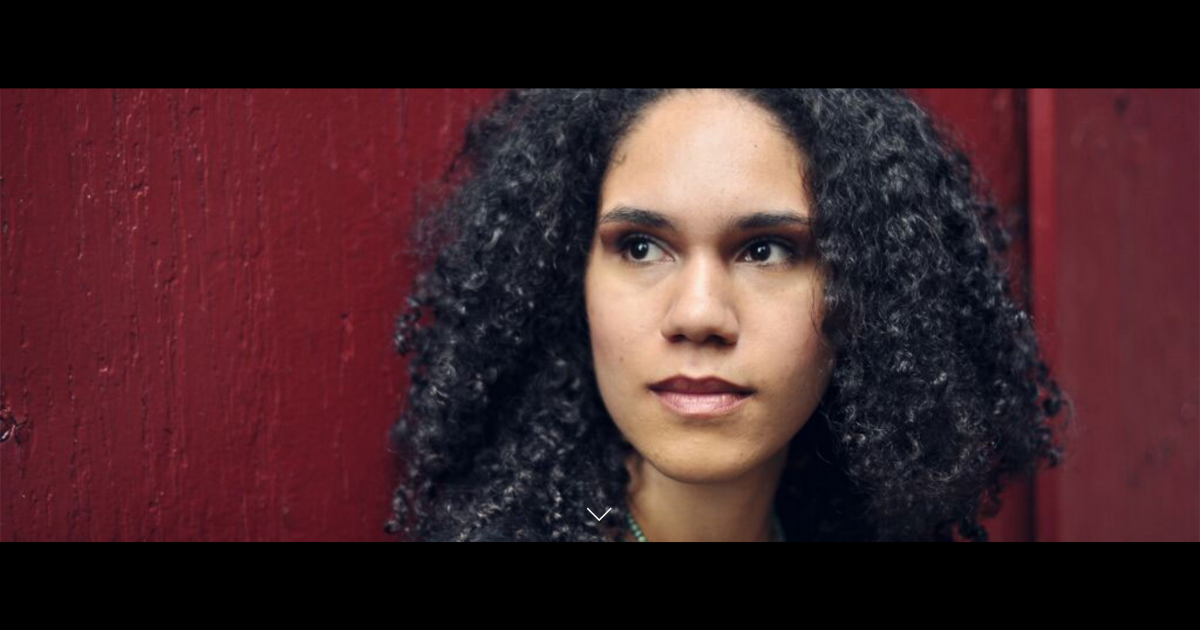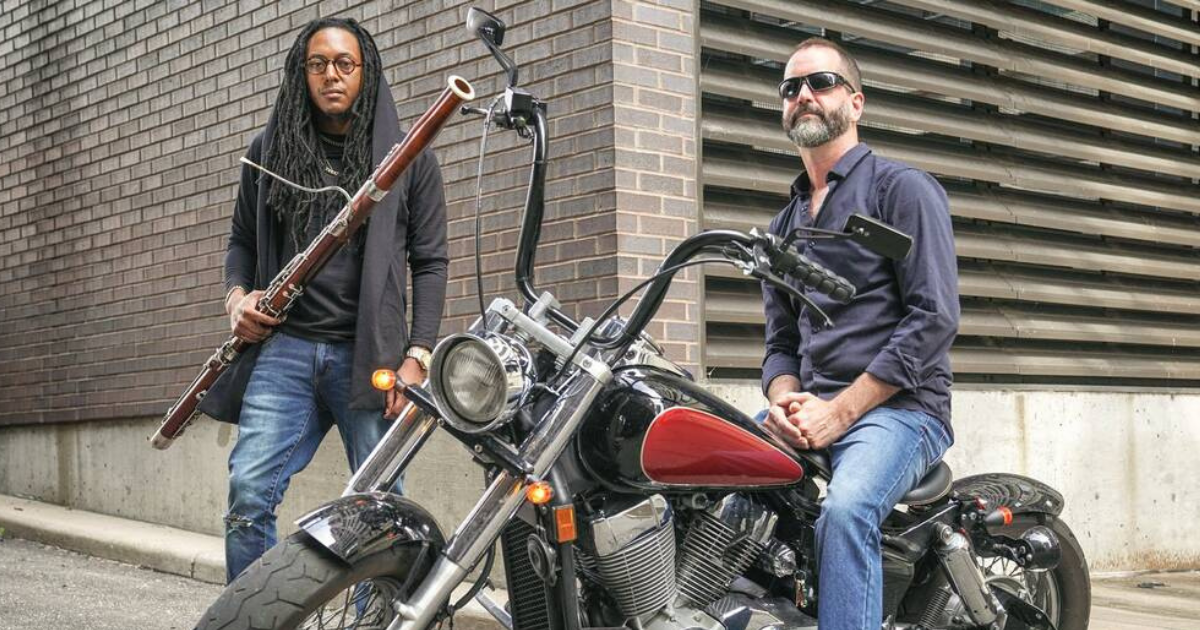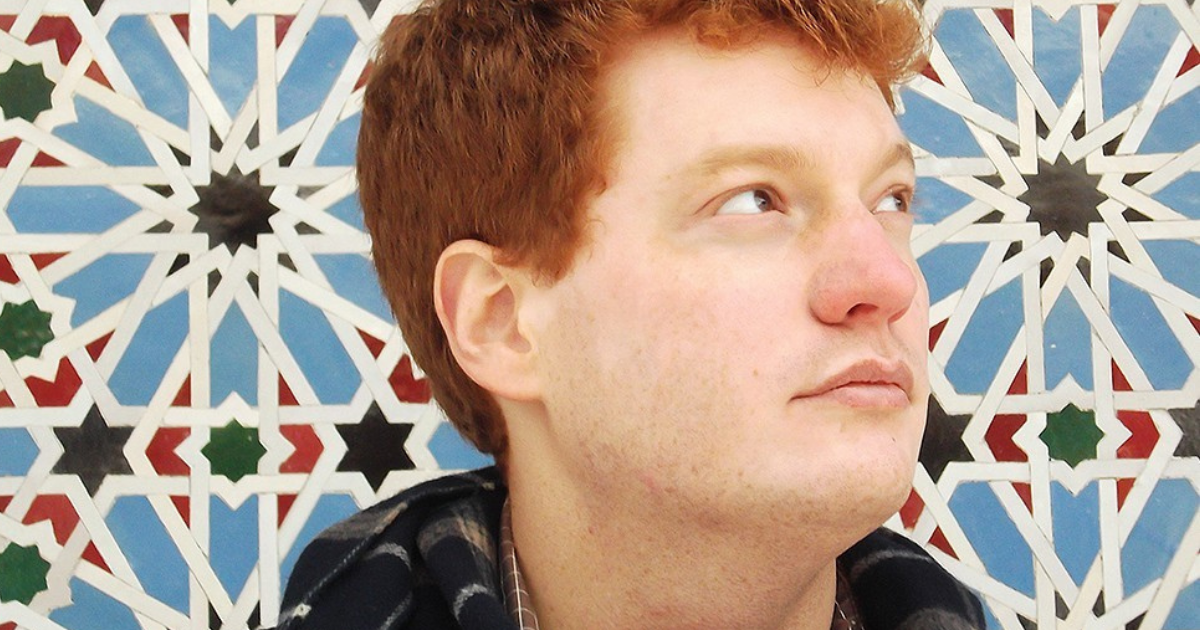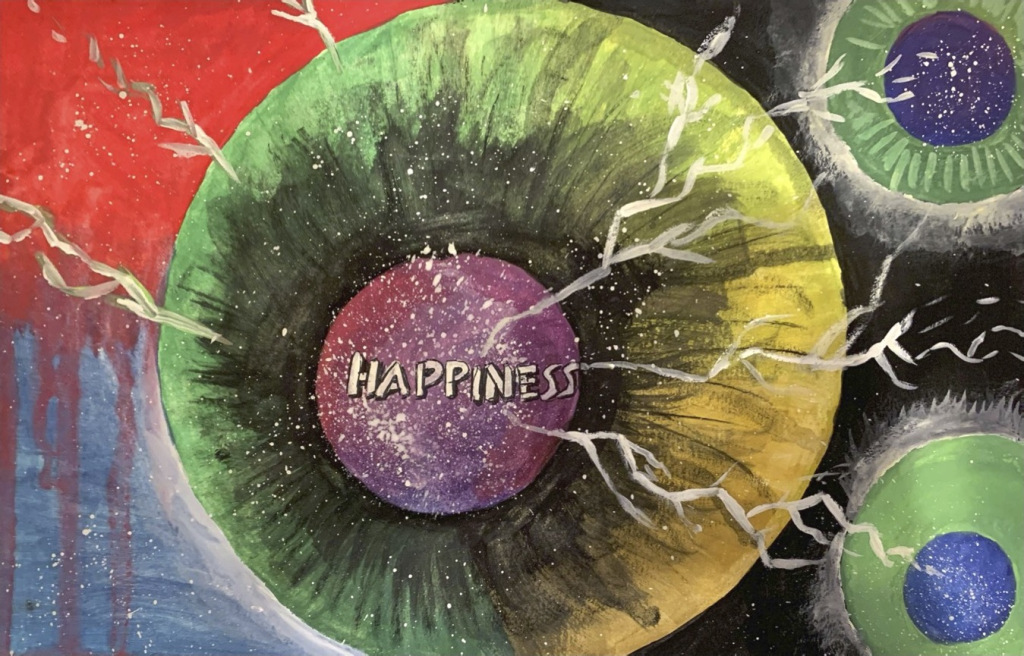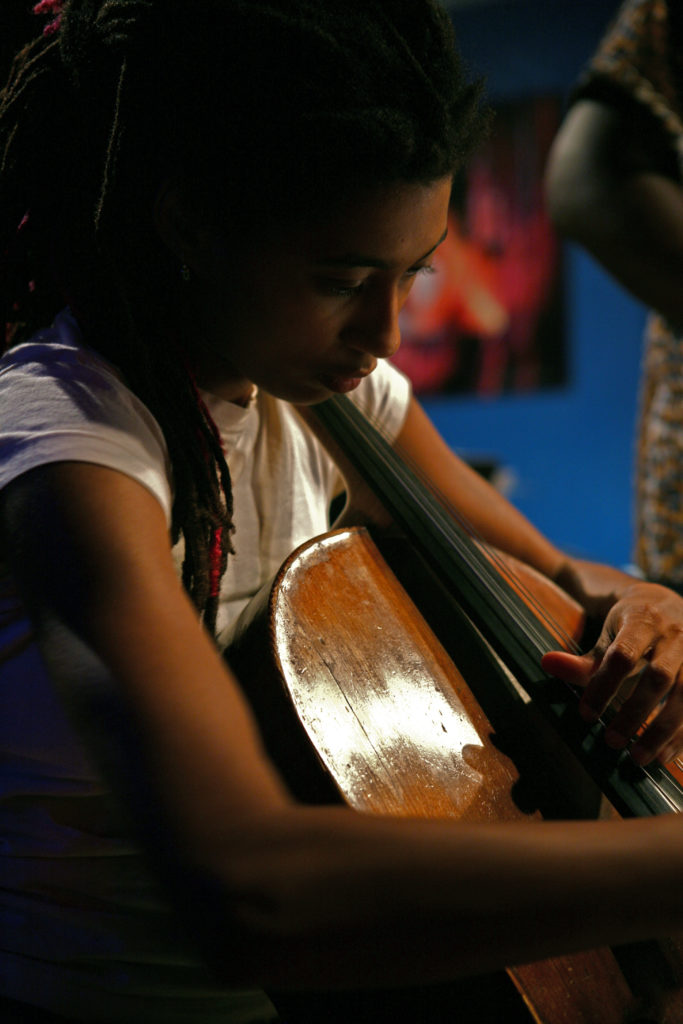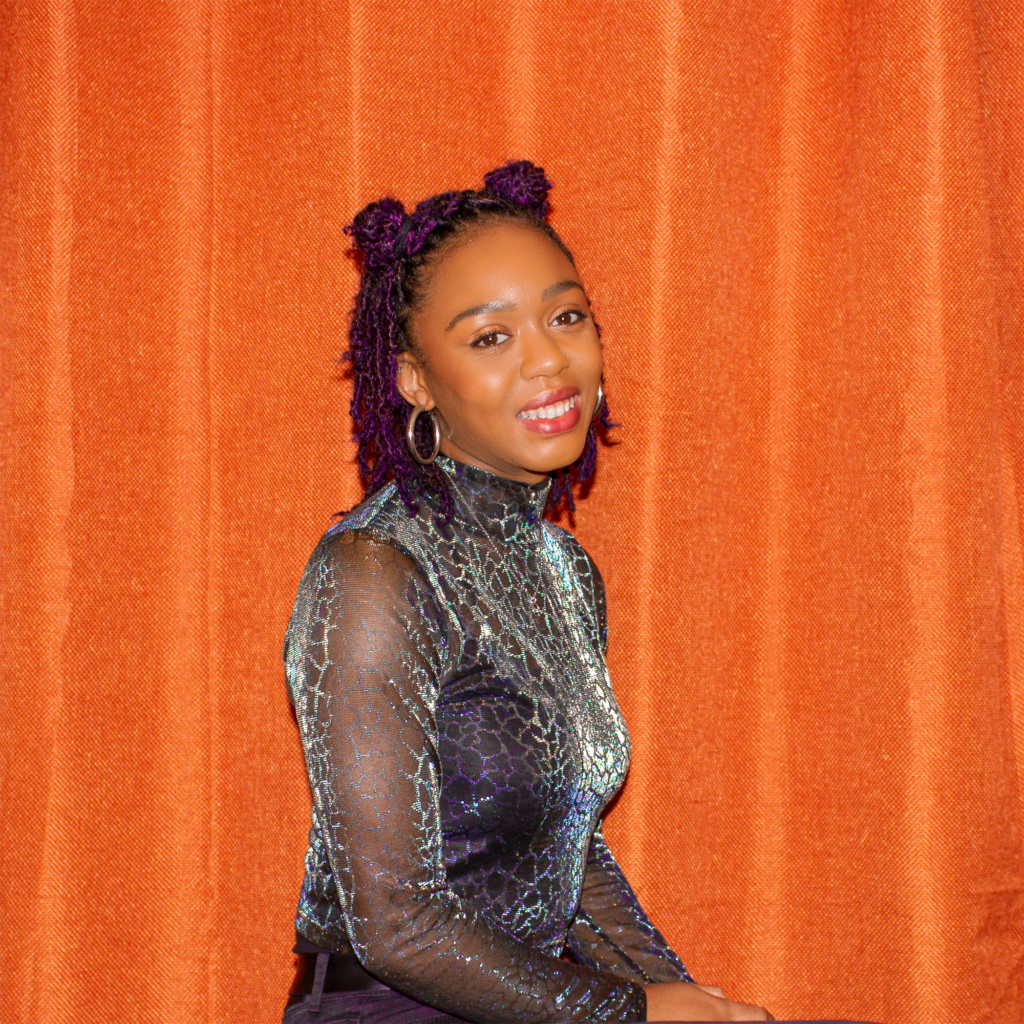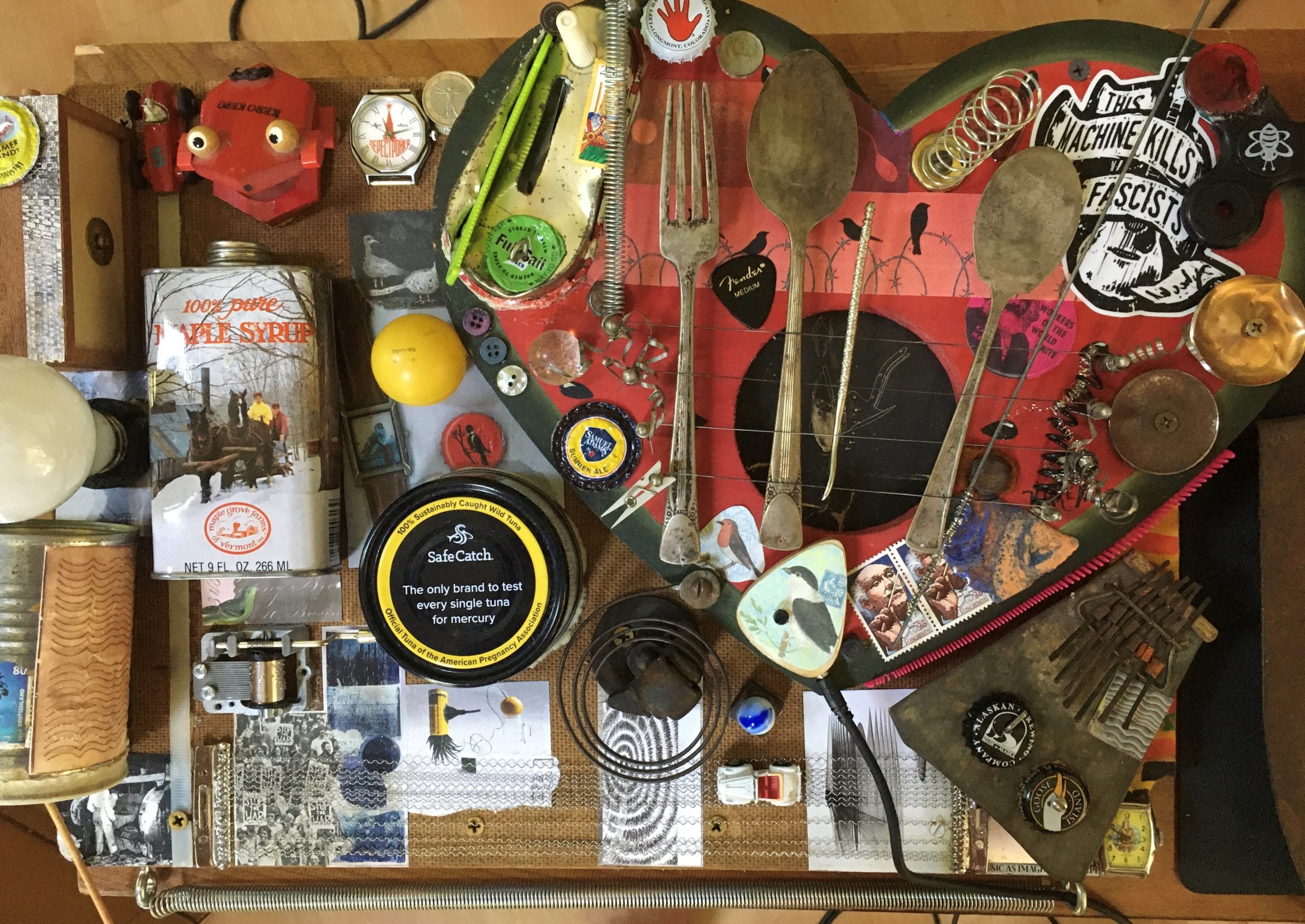
I spent my youth playing notes on a page. And if you’re reading this, there’s a good chance you did too. This notation, particular for what we think of as Western music, is merely one graphic, albeit specific, representation of musical sound. And some of it is quite pleasingly arranged on the page, with calligraphy and shaped staves. But connections of music to visual art are as old as music notation itself.
Chant was notated with beautiful framing on the pages. Mussorgsky’s Pictures at an Exhibition translates the paintings of Richard Hartmann just as Debussy’s La Mer is a sonic response to Katsushika Hokusai’s Great Wave Off Kanagawa. William Grant Still took as his subject works by Richmond Barthé, Sargent Johnson, and Augusta Savage in his Suite for Violin and Piano. Gian Carlo Menotti broke through his writer’s block when he visited Botticelli’s Adoration of the Magi to come up with perennial holiday favorite Amahl and the Night Visitors, and Lady Gaga was likewise inspired by the same artist’s Birth of Venus for her own “Venus.”
These visual connections give the listener a starting point for understanding, which is especially useful in the field of experimental music. What is unidentifiable sonically can trigger a memory or a feeling when it’s attached to a visual. A visual that inspires the composer or improviser is sure to also inspire audiences to a fuller and more moving experience.
A visual that inspires the composer or improviser is sure to also inspire audiences to a fuller and more moving experience.
The Kentler International Drawing Center is driving this connection home with its now-touring exhibition Music as Image and Metaphor. The Kentler Flatfiles have been accessible to Brooklyn visitors for three decades, and curators planned to bring a selection of the collection to the Bartlett’s Center in Columbus, GA this past year. This would have combined with performances by composer/pianist Michael Kowalski and percussionist/composer Allen Otte via the music department at Columbus State University.
In a dilemma familiar to many last year, by October 2020 it was decided that the plans had to change. But Kowalski and Otte did not completely abandon the concert – they instead created a lasting musical installation, able to reach far more visitors than a single performance, with an opening in January 2021. For 40 pieces from the collection, Kowalski and Otte would create individual short musical responses. 40 new pieces of music, connected to visual works, accessible in the gallery and also online. A setup that allows the visitor to absorb themselves in the aesthetic conversation, or, exist within the infinity mirror of creativity.
Both Kowalski and Otte, as well as curators David Houston and Florence Neal, were happy with the result, and now the exhibition is headed to the Ohr-O’Keefe Museum in Biloxi, MS this month.
Allen Otte is a member of the Percussive Arts Society Hall of Fame. With the Black Earth and later Percussion Group Cincinnati he has been on the cutting edge of percussion-based chamber music. (Note: the author is a former student of Allen Otte.) Michael Kowalski was a pioneer of computer-based composition, who moved from chamber music to opera when he founded The Postindustrial Players. The two overlapped as students at Oberlin, and have collaborated before. But while being quite like-minded artistically, their approaches could best be described as opposites.
Knowing the likely answer, I asked both men if it was easier to write one 20-minute piece or 20 one-minute pieces.
Otte found the episodic nature delightful. “I could boom, you know, get an idea, make a response and not be responsible for actually much more than than the idea and the response. And in a minute or 90 seconds, it’s gone.” Percussion being an area where less is more in many cases likely made this more intuitive. “If it were twenty one minutes from me, I would have been uncomfortable,” he said. But he had expected Kowalski, who lists “composer” first among his occupations, to keep the game at a high level.
Kowalski agreed that the two are of a different mind, and thinks an attentive listener could take note of different kinds of craftsmanship happening. But that’s part of the fun, “because you don’t get in one person’s groove and stay there. It takes 45 or 50 minutes to actually hear the whole thing. If you just walk through the show and spend a minute on every piece, that’s how long it would take.”
Guests can take a tour through the exhibition, listening to pieces inspired by each piece of art. There is no stated theme, and no planned progression. The locations in Columbia and Biloxi are set up differently, with the images in a different order, so if a story can be extrapolated, it will be different than any other version of the exhibition. This includes an online visit, which can of course be in any order one likes.
In the compositional process, nearly opposite approaches were both successful.
Kowalski outlined specific procedures for himself, almost like a game:
Music as image:
- Provide a soundtrack (as if the image is a film) or
- Use the image as a graphic score
Or music as metaphor:
- If the artist were making music, what would this image sound like? or
- Enter a dialogue with the visual art
Random selection of these approaches created structure – more of a puzzle to solve and less of a blank page. And he applied these four procedures with a simple shuffle of the deck – mostly sticking to whatever process came up, no matter the image.
Otte was more intuitive, keeping a chart of the images he had an immediate reaction to, and curating himself from there: asking “whether I was doing too much of one kind of thing and whether I really ought to find a way to push myself to think about a piece in a different way.”
Both Otte and Kowalski spent time studying with composer Herbert Brün, who was a pioneer of graphic notation, and who is also represented as a visual artist in the Flatfiles. In Otte’s hands, responding to Brün’s piece was unexpectedly his most difficult assignment.
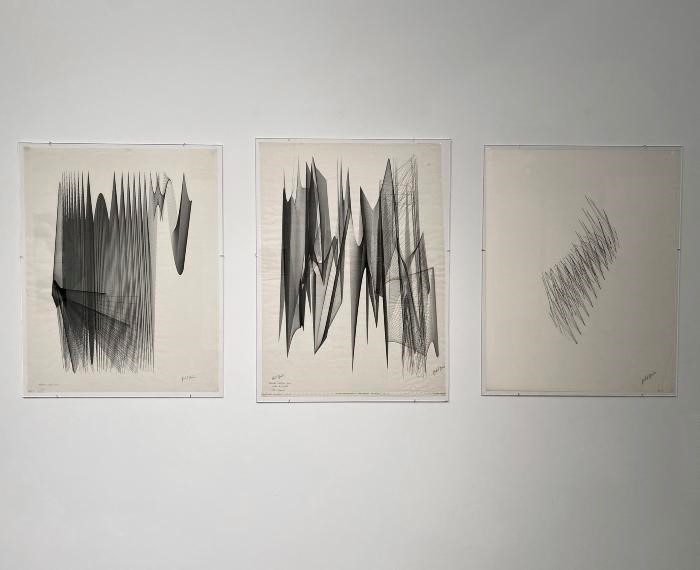
Three computer generated graphics by Herbert Brün–Orchestra Model One (1971), Ensemble Analogue Four (1974), and Web I (1971), image courtesy Kentler International Drawing Center.
“Herbert’s piece was one of the hardest ones to do and one of the last ones that I came up with,” he said. But also pointed out that throughout the project, difficulty often yielded a better result. This is possibly because some of the pictures presented a challenge, or because the challenge demanded more time be taken, and led to more self-questioning. Of Brün’s work he noted, “Well, actually, that’s the one that’s somewhat strong, that has some substance to it.”
Hear Otte’s response to Brün’s Orchestra Model One here.
For Kowalski, who is a white man, this challenge came in the form of an image of musicians at New York’s iconic Five Spot by biracial artist Robin Holder. His randomly selected procedure was to create a soundtrack – something that could easily have come across as an appropriation.
Five Spot 2 is one of the more literal images in the entire exhibition, so there was no way to ignore what was in it.
Five Spot 2 is one of the more literal images in the entire exhibition, so there was no way to ignore what was in it. “I had to be honest and embrace that. So that was a toughie.” So in this one case, he did break his procedural “rules,” writing what he felt was a more appropriate musical response. He also recruited an ensemble. Once again, having to think a little harder being a good impulse “that just forced me to come up with something else, maybe something better.”
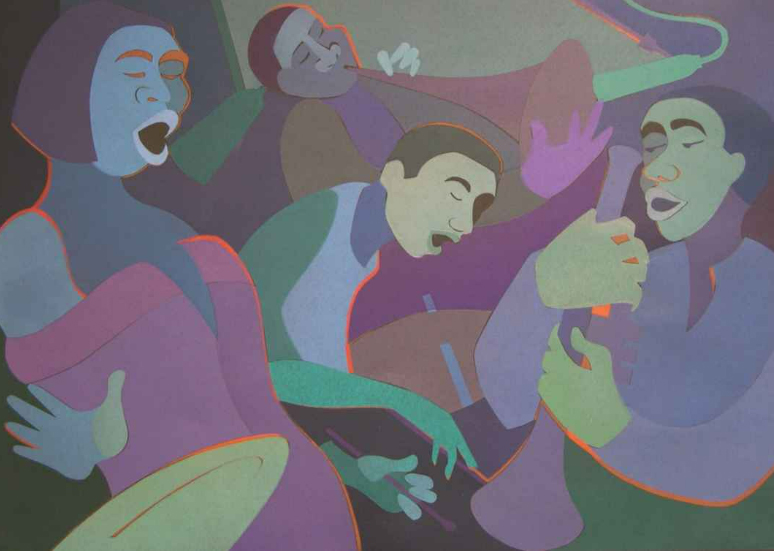
Robin Holder: Five Spot 2, stencil monotype, 22″x30″ (2005), image courtesy Kentler International Drawing Center.
Hear Kowalski’s response to Five Spot 2 here.
While the ensemble was an enjoyable addition to the project, one standout is fairly minimal, as Otte responds to art by Mary Judge using just an amplified pencil.
The museum’s notes call the music “often surprising, sometimes baffling, always illuminating.” The connection between the 40 works chosen (out of 2000 options) by David Houston and Florence Neal is up to the beholder. The same can be said about the pieces of music.
Otte felt a connection with the works by relating to what he called the performative aspect of an artist–the idea of still engaging an audience while the visual artist’s work remains still. Whereas Kowalski found a kinship with the act of creation – making a picture being analogous to making a sound. Different results, but the mindset implies a similar procedure.
All of which are ideas that can apply to other visuals when they combine with music–especially dance, where both Otte and Kowalski have a great deal of experience.
“I can only say that I’ve been, more often than not, astounded at what dancers are hearing in music and how they experience music and it’s often fascinating,” Otte said. In his experience dancers may give apologies for not “knowing” an appropriate musical term, while their assessment of the piece is generally quite insightful.
Kowalski also noted the complexity of choreography as a visual form: existing in three dimensions and moving. “If you’re sitting beyond about row 12, you’re seeing a great deal of usually very complicated forms, tracing patterns, on a fairly large stage.”
A previous collaboration between the two featured this interaction. Kowalski wrote a piece for the Percussion Group Cincinnati called Rebus, which includes choreography with flag signals. Initially composing a storyboard, once again the visual existed before the sounds. But, that piece was quite concrete – something Kowalski has always found essential working with dancers.
“Unlike musicians, dancers don’t notate, usually they don’t go into a rehearsal with a bunch of things in their head already,” he pointed out. “They work it out. It’s a very different way of working from most musicians that I know.”
There is no one right way to do a project like this. But like any collaboration, trust must be involved. If the creators are open and welcoming to each other’s vision, then brilliant combinations are possible. If we were to call the visual and the musical participants “sides” of the equation – the sides have to balance, and be somewhat open to the other’s contributions. Kowalski describes this as a tension, much like a conversation. But to be successful, each factor, visual and musical alike, must point to the other.
There is no one right way to do a project like this. But like any collaboration, trust must be involved.
“Some people dig it more visual, and then they get into the music and the other people the other way around, and I just think that’s ideal,” he explained. “I’m very happy about that.”
Despite their different approaches, both musicians planned and charted and graphed to create each of these responses. Otte describes the planning as a math problem. “The calculations that went into that final one minute; that final 60 seconds repeated for each of us 20 times in one way or another.” But also occasionally the minute of music came quickly and easily. “The ones which just came in in some burst of fun, we stuck with a few of those.”
Otte and Kowalski will be live at the Ohr-O’Keefe Museum for a talk and performance of even three more premieres. Forms of falling dust is a work for prepared yang-qin by Rachel C. Walker, a former student of Otte. Another collaboration between Otte and Kowalski called How To Compose Yourself involves a fairly frenzied piano part with percussive commentary. And the concert includes a new iteration of Begin Again, a work by Kowalski whose material stretches from the year 1597 to 1977 and now to 2021. In Begin Again a treatise by Thomas Morley was interpreted on an IBM computer by Ed Miller. A 1977 rendition included the voice of soprano Marlene Rosen, and this version it will include today’s additions from Otte and Kowalski.
The act of drawing on decades of material is part of what makes the project feel so substantial. Music originally created on an IBM the size of a linen closet, being watched and heard on a phone that fits in my hand, still feels fresh and new in this context. And while these pieces of music once again come to life thanks to fresh realizations, they also have renewed meaning thanks to the pairing with another artist’s visual material.
Music originally created on an IBM the size of a linen closet, being watched and heard on a phone that fits in my hand, still feels fresh and new in this context.
The clichés about art and music would tell us that the two aesthetic forms are bound to go together. I leaned into one of these, by Jean-Michel Basquiat, in my conversation with Otte and Kowalski.
“Art is how we decorate space. Music is how we decorate time.”
“Decoration,” said Otte. “That’s a loaded word.” Kowalski objected as well.
But at the surface level he immediately conceded that music could be “delightful if it is in fact decorative and entertaining.” And Kowalski identified “entertaining” as a secret word.
“That’s the word that overlaps: ‘decoration,’” Kowalski said. “Decoration is congenial and attractive and so is entertainment when it’s any good, I think. And so I would use the word ‘shape’ instead of ‘decorate.’”
So Basquiat is possibly correct, depending on what the music has to say. Whether or not you can welcome the word “decorate” for a serious piece of music is up to you, just as whether or not a piece of art “shapes” your space. And the fact that we’ve returned to these kinds of philosophical artistic conversations is another sign that we’re emerging from the harshest closure in the history of music with our thoughtfulness intact.

Development: musical image / Michael Kowalski’s music sketches for “Untitled” by Kazuhiro Nishijima, images courtesy Kentler International Drawing Center.
As a pandemic-pivot, this project was enormously successful in that some music-making happened at all. While the music world navigates a bumpy road to a new normalcy, this project is quite possibly a model. Not just of the value of interdisciplinary connections, but also one of flexibility and access.
While the music world navigates a bumpy road to a new normalcy, this project is quite possibly a model.
Music as Image and Metaphor has visual and aural elements that are complete statements on their own. It can be experienced at an individual level, at one’s own pace. And it’s available in varying degrees of in-person participation, including online. And geographically, it has been available to viewers in the southeastern USA. While the Kentler Flatfiles reside in Brooklyn, they have been available in this form to viewers in Georgia and Mississippi. Modeling and sparking conversations – musical dialogues – that allow us to grow our audience, our depth as artists, and our own creativity.
40 Flatfiles down, 1,960 to go.
*
This exhibition of the Kentler Flatfiles includes pieces by the following visual artists: Herbert Brün, Beth Caspar, Phillip Chen, Abby Goldstein, Takuji Hamanaka, Keiko Hara, robin holder, Richard Howe, Hannah Israel, Mary Judge, Kazuhiro Nishijima, Ralph Kiggell, Rosalinda Kolb, Jiří Kornatovský, Robert Lansden, Simon Lewandowski, Jim Napierala, Florence Neal, Margaret Neill, Morgan O’Hara, Gahae Park, Jaanika Peerna, Scott Pfaffman, Orlando Richards, Susan Schwalb, Viviane Rombaldi Seppey, Molly Snyder-Fink, and Hugh Williams.
